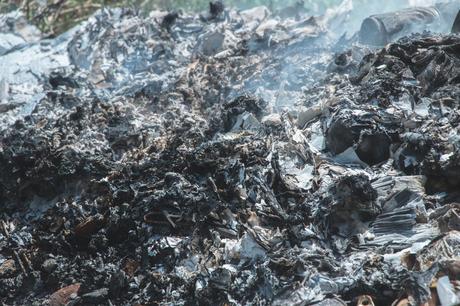
Moisture content refers to how much water is in a product. It affects the physical properties of an item such as its weight, density, viscosity, conductivity and other elements. Moisture content is generally calculated by the amount of weight lost in an item when it is dried.
When it comes to incineration, different levels of moisture content can affect combustibility - simply, how effectively an item can burn. Materials with high moisture content won't burn well and should be dried out before being incinerated to improve productivity in the burning cycle. As such, those using incinerators should think about the current treatment of items before they are inputted to a machine.
How to calculate moisture content
All waste has a certain percentage of it that's made up of water - its moisture content. How high that percentage is determines how well something will burn. Ironically, to calculate moisture content, an item must be fully dried. The amount of water in an item is determined by subtracting the dry weight from the initial weight. The moisture content is then calculated as the amount of water divided by the dry weight or total weight, depending on the reporting method.
As many use incineration to convert waste to energy, much time and money is spent drying out waste before it is burned to create the most efficient incineration process possible - and for good reason.
Moisture content and waste
For example, if you were to take a bale of clothing that's completely dry, its moisture content would be extremely low - perhaps below 5 per cent - so it will burn quickly and effectively, creating a lot of energy in a short space of time.
If the same bale of clothing had been left out in the rain for six months before being placed in an incinerator, the machine would primarily burn off the surplus water within the items, turning it into steam, before it could fully ignite and burn the material to create energy, wasting a lot of time and fuel in the process.
When using a medical waste incinerator the waste mix can be quite varied from batch to batch, pathological waste is often has a higher moisture content that sharps waste. We recommend that the batches of waste are mixed as much as possible to normalise the moisture content throughout.
When it comes to efficiency in incineration, we must also look at the amount of energy content within an item or material to determine if it will improve the process energy balance. For example, poultry litter has a low moisture content (<30%) and medium energy content (4,500 to 7,000 Btu/lb) which means it will both burn efficiently and create a high level of energy output when high temperature and controlled air levels are used to generate thermal energy (heat) or gaseous fuels (syngas).

How to tackle high moisture content
For incineration purposes, the lower the moisture content, the better. However, if items are too dry, they are at major risk of explosion. Custard factories and flour mills, for example, have special techniques in place to ensure their premises are well protected from explosion when managing waste.
Other sites will also need to take particular steps to dry out their items, such as creating a dry room where waste can be stored to minimise its moisture content before it is incinerated. Otherwise, you risk creating more smoke than energy, and not utilising an incinerator to its best potential.
Anything with a moisture content above 40 per cent should be dried out ahead of incineration. This can be easily determined using a standard moisture meter, which are available for between £15 and £20.
Sustainable, circular processes for moisture content
Complete combustion is important within the incineration process, and all our machines offer the capability to achieve it. However, any items with a high level of moisture content are less likely to achieve complete combustion.
Thankfully, incineration technology is advancing to support those who are unable to implement a dry room or other drying techniques. Machines are available today which use heat generated by a previous burn in an incinerator to blow hot air through a new waste cycle, to dry it before it is incinerated. Using incineration in this way creates an entirely circular process, drying out batches of waste to prepare them for a more efficient process.
To find out more about moisture content, and what you can do to get most efficiency from incinerating your waste, contact the Inciner8 team today on +44 (0) 1704 884020 or visit our website.

